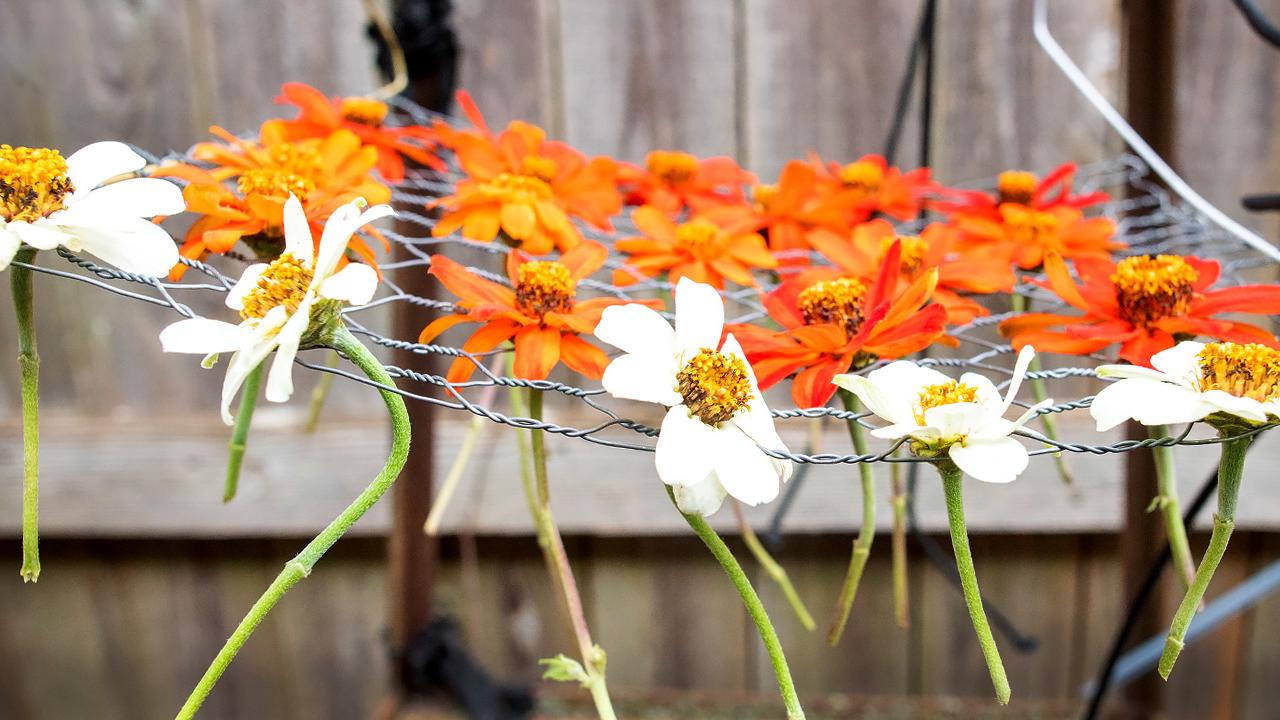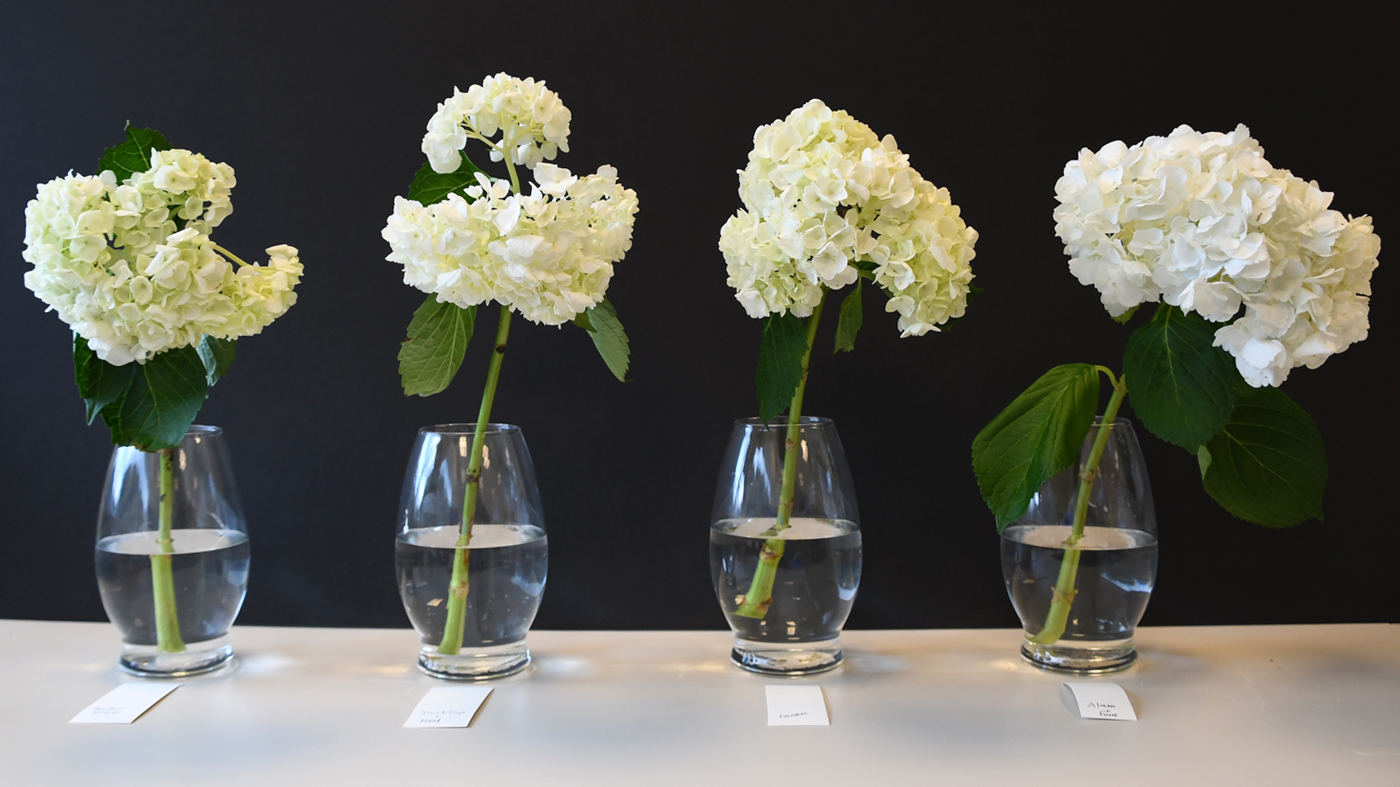

How-to
Garden Stories
The secret to long-lasting cut hydrangeas
Hydrangeas are a coveted late summer bouquet, but the cut flowers never last long—we set out to discover how to get enduring blooms.
The Chicago Botanic Garden’s Marketing Team ran an experiment to test an overly dramatic hypothesis: cut hydrangeas wilt within an hour or two of putting them into a vase of water.
We used four grocery store hydrangeas to test three methods:

Hydrangeas we tested, from left to right: smashed stem, Quick Dip, plant food only, alum powder.
Specimen 1
Dipped the stem in alum (a food additive used for pickling or canning)
Specimen 2
Added Quick Dip powder to the water
Specimen 3
Smashed the stem with a hammer
All of them were given plant food that came with the flowers. As a control, one had only plant food.
Our results?
The hydrangea with the smashed stem wilted on Day 3.
The hydrangea with only plant food performed the best but began to wilt on Day 7.
We learned that we should have asked the Garden’s horticulturists for advice before our experiment.
“The smashing of the end is an old-fashioned means to open capillaries to get more water uptake,” said exhibits horticulturist Jason Toth. “But it can also crush the xylem, which is the plant’s tissue that transports water up the stem.”
Do this: Put them in water ASAP
Whether you cut or buy them, get your hydrangeas in water immediately. If hydrangeas are out of water for too long, air gets taken up the stem and wilting will begin.
If you’re in a car, don’t suffocate them in the trunk with the groceries. The warmer it is, the quicker any water in the plant will evaporate. Hydrangeas are prone to wilting because they have so many small petals, which means a larger surface area for water evaporation.
Toth also suggested “removing the leaves to help reduce transpiration and increase bloom longevity.”
Know this: Sticky resin clogs the cut site
When you cut a hydrangea bloom, the plant produces a sticky resin at the cut site that will discourage water uptake. Toth likens it to the plant attempting to heal a wound. Sticking the cut end into boiling water will help unclog the plant’s capillaries, which will clear a path for water uptake.
“And cutting the stem at an angle increases the surface area of the wound, exposing more xylem to water for uptake,” Toth add.
Good news: Wilted blooms can be revived
If you see blooms wistfully wilting, here’s a lifeline. Submerge the whole flower in a bucket of tepid water for a half hour.
“You will see it inflate like a balloon,” Toth said. “By dunking it you are reintroducing water through the flower as well as the cut stem.”
Takeaways
“Flower food helps with longevity but it’s more important to understand the mechanics of water uptake for plants,” Toth said. “Flowers are constantly fed by water. It’s such a finite time after it’s cut to get it back in water because you are interrupting that flow.”
Toth added that you should take a vessel of water with you when cutting or buying. And it’s good to recut the stems and place them in boiling water to promote water uptake. Also, using clean water and sterile water vessels helps with longevity, and you should keep debris out of the water, he said.

